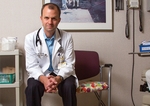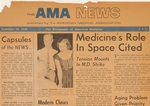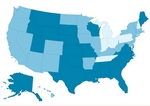profession
EDs report on-call coverage problems
■ 74% of emergency departments have trouble getting on-call specialists, causing delays in care as patients are transferred elsewhere, a new study finds.
By Carolyne Krupa — Posted Dec. 13, 2010
- WITH THIS STORY:
- » External links
- » Related content
Nearly three-quarters of emergency departments nationwide struggle with getting enough specialists to take call, leading to dangerous delays in care, according to a new study.
Researchers surveyed 442 ED directors and found that 74% reported inadequate specialist on-call coverage, with problems so severe that 60% said they had lost 24-hour coverage for at least one specialty in the past four years, according to the study in the December issue of Academic Emergency Medicine.
"This is a huge problem," said Sandra M. Schneider, MD, president of the American College of Emergency Physicians and an emergency physician in Rochester, N.Y. "If one goes back just 15 years ago and you had an accident, a surgeon would come in and see you and take care of you. An orthopedist would come and set your bones. You would be taken care of."
But those specialists may not be available today, and patients often have to be transferred to another facility, she said.
While there are shortages in some areas, there are enough specialists to cover the demand in most places, but physicians are unwilling or unable to take on the responsibility, Dr. Schneider said. To be on-call, they have to pay higher medical liability premiums and handle the most serious patients. They also are at greater risk of being sued because of the severity of the cases and their limited relationships with patients, she said.
Whereas physicians once took call to find patients and help establish their practices, many young physicians now go into group practices with established patients, said Mitesh Rao, MD, lead study author and a third-year emergency medicine resident at Yale School of Medicine.
"It's sort of a 'Catch-22,' " he said. "There's no real incentive for specialists to take call."
Paying on-call doctors
High numbers of uninsured patients also mean that many on-call physicians have a hard time getting paid for providing emergency care, Dr. Schneider said.
"Many of the patients can't or won't pay them," she said. "And if [doctors are] up all night, they are not going to be able to take care of patients in their own practice the next morning."
Teaching hospitals are slightly better off, with 68% reporting on-call coverage problems compared with 78% of nonteaching hospitals, according to the study. Troubles were worst in the South and Northeast, with 81% of Southern and 79% of Northeastern emergency departments reporting coverage problems. Midwest hospitals had the lowest rates at 62%.
Twenty-three percent of respondents said their hospital's trauma-level status had been affected by shortages, and 26% reported unreliability in on-call coverage. Dr. Rao said he heard horror stories from some ED directors spending hours trying to track down a surgeon to treat a patient with a serious hand injury.
"It was really surprising," he said. "Every ED director I was speaking with said it was a struggle to provide on-call coverage."
Rather than risk greater morbidity and mortality by continually routing patients to other facilities, liability laws should be changed to give special consideration to physicians who provide emergency coverage and limit suits to cases of gross negligence, Dr. Schneider said. Tax credits or discounts on medical liability insurance also might help, she added.
"The real issue is breaking down those barriers so they could take care of the patients locally," she said.












